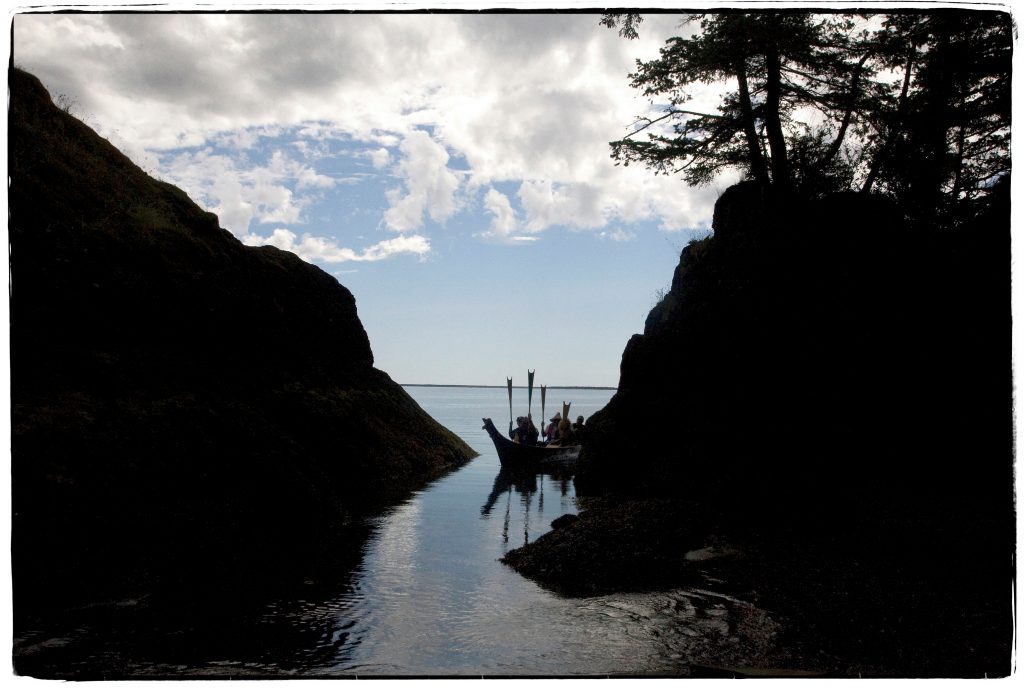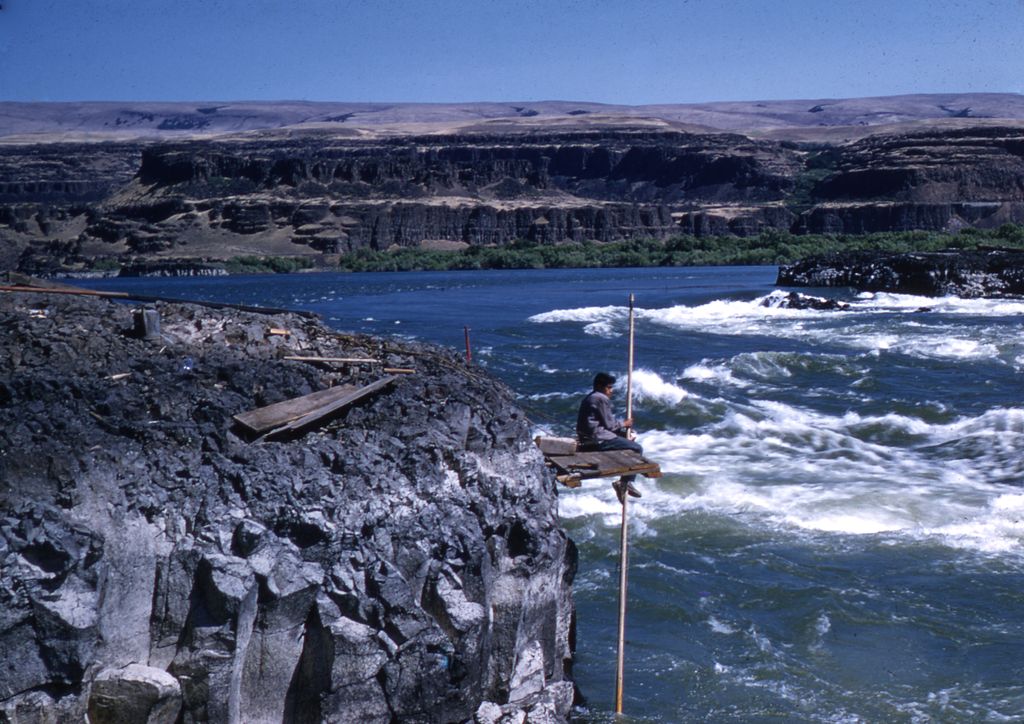Welcome to Episode 115 of Ramping Up your English. With the goal of improving listening comprehension, we’re continuing in our thematic unit on Native Americans. This episode focuses on American Indians in today’s state of Oregon.



Watching Episode 115
Learn about the Chinook people, the great trading center at Celilo Falls, and the Klamath Tribes – all Native American cultures in today’s state of Oregon. Click here to see Episode 115: Oregon as seen on RVTV.
Episode 115 Summary
We enter this episode the same way people entered Oregon hundreds of years ago – through the lower Columbia River. Those entering the river form the Pacific Ocean would first encounter American Indians of the Chinook Culture. These boat-centered traders welcome many people over the centuries, just as they had welcomed British and American sea captains and Lewis and Clark.
Upriver, the Columbia Gorge narrows to form a natural salmon-fishing area known as Celilo Falls. Wishram and Wasco tribes welcomed visitors to trade and to fish. This hub in the American Indian Trade Network formed a great meeting place for Native Americans from throughout the Pacific Northwest. In 1957, the Dalles Dam flooded Celilo Falls and other features, ending thousands of years of this great fishery and meeting place.
The Klamath Tribes used to travel north to participate in this great gathering. They thrived in the area of Upper Klamath Lake, enriched by fish, waterfowl, game animals, and a water lilly called wocus. The Klamath launched canoes on Oregon’s largest lake wihtin sight of Mt. McLaughlin. In 1954, the Klamath became the first victims of Termination – an action by the U.S. Congress to sever ties between native people and the U.S. Government. While some welcomed this new establishment, it was a disaster for the Klamath as well and the Western Oregon Tribes that followed. The Klamath Tribe was restored in 1986 as the Klamath Tribes – which included the Modoc and Yahooskin band of the Paiute.
Featured Videos
There’s just so much to learn about Native Americans in Oregon. This episode features Part 25 in the series of videos about American Indians. The long version doesn’t fit in the 30-minute Ramping Up your English episode, but it has much more interesting detail. Click here to watch it. The shorter version is edited back to fit in the episode. Click here to watch the shorter version.
Linked Videos
Here are some videos related to this episode.
Click here for an overview of Oregon Native Americans in the Oregon Public Broadcasting production Broken Treaties. Click here to watch Standing Strong: The Tribal Nations of Western Oregon by Metzler Media. Click here for a video about the Chinook Indians who had wide influence along the Columbia River and whose language formed the core of Chinook Trade Jargon. Learn about the houses that Chinook people lived in when you click here.
Click here to see a video of the Klamath Tribe as they struggle to save their language. Click here for a vintage report by KGW hosted by Tom McCall about the crisis of Klamath Tribe being terminated. In 1986, CBS News did a special on the restoration of the Klamath Tribe. Click here to watch. The Klamaths are also the focus of their own high-quality video entitled Heal the Land, Heal the People. For part 3 of this production, Click here. Learn more: Click here for a video about Klamath children and government boarding schools. Click here to see how the termination policy of the United States affected the Klamath. Click here to see how termination has an effect on the health of Klamath tribal members. Click here to see the video Return of the Cwaam. Click here to see how the Klamath Tribes are using fire to heal the land. Clck here to see a video entitled Sucker Release from the Klamath Tribes.
Click here for a video about the Consolidated Tribes of the Grand Ronde. This includes history of the Tekelma People. Click here for educational activities by the Confederated Tribes of the Grand Ronde. Click here to see a presentation about the Confederated Tribes of the Grande Ronde entitled Oregon History 101. Our Story is a short video about the Grand Ronde. Click here to watch it. Click here to learn how native Americans once thrived at Willamette Falls but were then displaced by the government. Click here for a video about the Santiam River and its connection to the Grand Ronde. In this episode, we used some video from the Grand Ronde Canoe Dance. Click here for the whole video.
Closely related to the Grand Ronde, the Siletz Reservation is another location where Indians of Southern Oregon were forcefully relocated. Click here to watch a Siletz mother teach her child about maps. Click here to learn about the fight ot preserve the Siletz language. The Siletz live among the forests of the Coast Range, Click here to learn about their management of healthy forests in concert with the U.S. Department of Agriculture. So much of Native American history is deeply disturbing. The following video is not intended for children. Click here to see the video about the Siletz Whipping Post – a reminder of the violence that was heaped on indigenous people. Click here to learn a great deal about the Siletz – Skookum Tillicum: A Strong People. Click here for a video about wise money management by Siletz leaders. Click here to learn about the Dance House Movement. Click here to delve into Siletz history entitled The People are Dancing Again.
Much of Southeastern Oregon was home to the Paiutes. When armed men occupied the Mauheur Wildlife Refuge a few years ago, they demanded that U.S. Government land be given to them. Click here about the reaction of the Paiutes to that demand.
Another reservation in Oregon is the Warm Springs. Click here for a video about the Warm Springs Salmon Bake. Click here to see a report by KGW on the Warm Springs Museum. For an overview of the Confederated Tribes of the Warm Springs, click here. For another view of the Warm Springs, Click here. If you want to see Warm Springs Round Dancing, click here. Now click here to see the Mill Creek Restoration project by Warm Springs. Click here to see to film 9 Tribes of Oregon.
Many treaties agreed that Native Americans – in return for ceding land – could hunt and fish in their usual and customary places. This provision was a major element in the Fishing Wars that raged in Oregon and California. Click here to see the video about this. Speaking of fish, click here to watch a video about Celilo Falls on the Columbia River. Click here to see a report on the “last” salmon feast at Celilo Falls (note: ceremonies welcoming the salmon are still conducted at Celilo Falls). Click here for a more Native American perspective on the flooding of Celilo Falls. Click here to watch the removal of a dam at the White Salmon River in Washington.
The molalla people inhabited much of Oregon’s mountainous region before being remover to reservation. Click here to see Part One of a video about them. Click here to see Part 2.
Next Episode
As this episode focuses on several Oregon Tribes, Episode 116 will explore the culture and history of tribes in the Rogue River Watershed; especially the Takelma. Click here to visit the Episode 116 page.